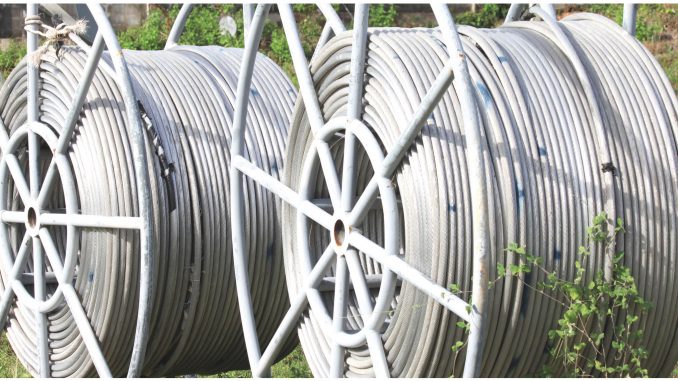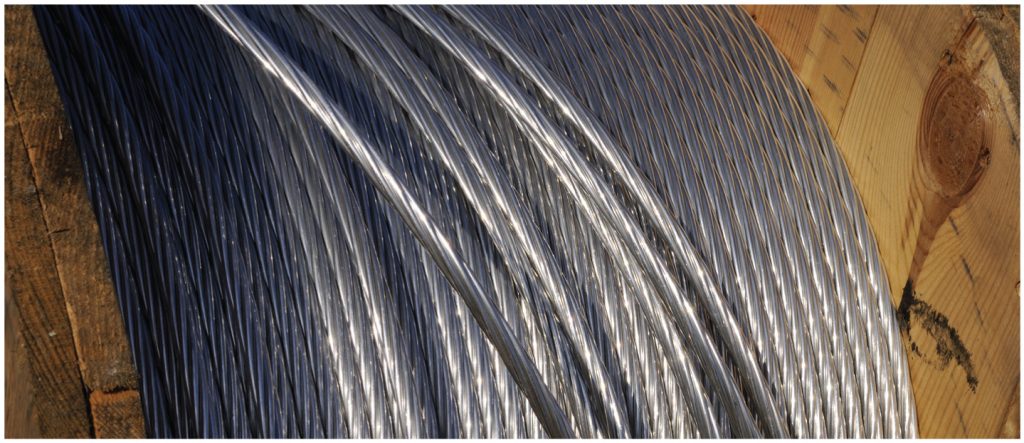
A key trend in the transmission industry in recent years has been the adoption of new conductor technologies. The major drivers of this trend have been the scarcity of space, which leads to delays in obtaining right-of-way (RoW) clearances, the growing size and complexity of the grid, and the development of smart grids.
Advanced conductor technologies, moreover, play an important role in ensuring the timely implementation of transmission projects to keep pace with upcoming generation projects. They also help in bringing down transmission losses and preventing power outages.
Conductors come under two broad categories: homogeneous and non-homogeneous. Homogeneous conductors usually include all aluminium conductors and all aluminium alloy conductors. Non-homogeneous conductors have several varieties such as aluminium conductor steel reinforced (ACSR), all aluminium clad steel reinforced conductors, thermal aluminium steel reinforced conductors, all aluminium alloy steel reinforced conductors and all aluminium steel supported conductors.
ACSR conductors
ACSR conductors are the most commonly used conductors. They are high capacity, high strength stranded conductors that are generally used in overhead power transmission lines. However, these conductors can withstand temperatures up to only 75-85 ºC and cannot work beyond 105 ºC in emergency situations. This restricts the use of ACSR conductors and calls for a better technology that can withstand high temperatures.
HTLS conductors
High temperature low sag (HTLS) conductors are aluminium wired conductors that have approximately the same diameter as that of ACSR conductors, but are capable of operating at temperatures as high as 250 ºC. HTLS conductors can carry almost double the current as that of ACSR conductors of the same size, while the maximum sag and maximum tension remain the same for both. These conductors help in augmenting the thermal rating of transmission lines. A major advantage of HTLS conductors is that they can be installed without any modification of the existing structures and foundations, which results in time and cost savings.
STACIR conductors
Reconductoring is emerging as an increasingly important industry need. The reconductoring of existing transmission lines helps in augmenting the quantum of power transmitted through them. To this end, project developers can install superthermal aluminium clad Invar reinforced (STACIR) conductors. These low sag conductors are manufactured with aluminium and zirconium alloy rods and comprises a strong inner Invar steel core and concentrically arranged superthermal-resistant aluminium alloy wire strands forming the outer layer. STACIR helps to uprate the existing transmission lines in a short time without any modification of the existing transmission towers. It can carry electricity up to two times the rating of the replaced conductor with the same diameter.
GAP conductors
GAP conductors are another type of conductor that can be used for reconductoring. GAP conductors are manufactured from (super) thermal-resistant aluminium alloy wire and high strength steel core. They are extremely useful for reconductoring old transmission lines and can increase the capacity of existing lines by 50-100 per cent.
High ampacity alloy conductors
The most common high ampacity alloy conductors are thermal alloy conductor steel reinforced (TACSR). The inner core of these conductors is composed of galvanised steel and the outer layers are made of thermal-resistant aluminium alloy. They are used to enhance the capacity of the existing transmission lines as well as new lines wherein the power transfer requirement is very high. These conductors have 50 per cent higher ampacity as compared to traditional conductors and are useful for meeting the future increased demand for power.
ACCC conductors
Aluminium composite core conductors (ACCCs) are another type of conductors that can be used to enhance the capacity of new transmission lines as well as for the reconductoring of existing lines. They are manufactured from carbon, glass fibre and trapezoidal-shaped aluminium. These conductors are resistant to environmental degradation. They can reduce line losses by up to 40 per cent as compared with conventional conductors of the same diameter and weight. In addition, these high ampacity low loss conductors are eco-friendly.
ACSS conductors
There has been an increased focus on the transfer of a large quantum of power with minimum RoW. The new entrants in the transmission sector are likely to utilise high temperature conductors for maximising power transfer. The latest technology in conductors for new lines is aluminium conductor steel supported (ACSS). ACSS conductors are manufactured from annealed aluminium 1350 wires and comprise an inner core of Galfan-coated steel wire with concentrically arranged annealed aluminium strands forming the outer layers. These conductors also have reconductoring applications and offer low sag when operating at temperatures of up to 250 ºC. With the same tower loadings, ACSS conductors are capable of carrying power up to two times the rating of the replaced conductor with the same diameter.
Conclusion
The performance of various new technologies is measured on the basis of the power transfer capacity, line losses and price levels of the conductors. In view of these parameters, ACCC conductors have the lowest line losses whereas TACSR conductors have the highest line losses. To draw maximum power, STACIR conductors are the best option while TACSR conductors have relatively low transmission capacity. In terms of price levels, TACSR conductors have the lowest price whereas STACIR conductors are relatively costlier. Of all the new technology options, GAP conductors are the most economical and efficient.
The manufacturing material used for various conductors is different and varies according to temperature levels. At high temperature levels, it has to be ensured that the conductor accessories do not deform due to the temperature levels of generation conductors. The conductor accessories used for conventional conductors can be safely used for new conductors up to temperature levels of 150 ºC without any deformation. This is subject to the condition that the physical dimensions of the conventional conductors and the new generation conductors are almost identical. For temperatures above 150 ºC, temperature tests on clamp connectors are a better option. In situations where mechanical strength is the criterion, the material used in manufacturing the conductor can also be used in the clamp connector.
In sum, the new conductor technologies are aimed at solving the growing structural and capacity problems of power networks. These technologies will help increase the capacity of the transmission and distribution networks without making any modifications in the structure of the existing towers. The new conductoring solutions will reduce the per unit transmission cost as well as create additional capacity for meeting future power demands. With the increased focus on environmental protection, green technology solutions are also being developed to bring down carbon emissions. The use of new technology conductors with high ampacity will, moreover, help bring down the capital expenditure of developers, thus leading to overall economy and efficiency.

